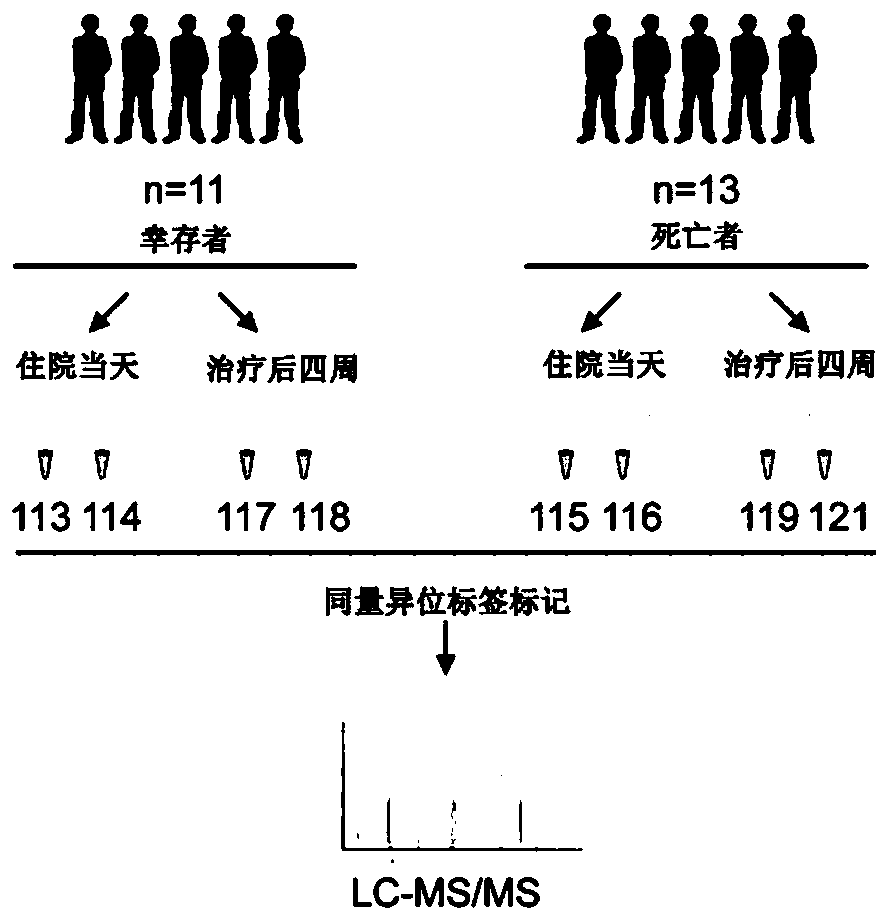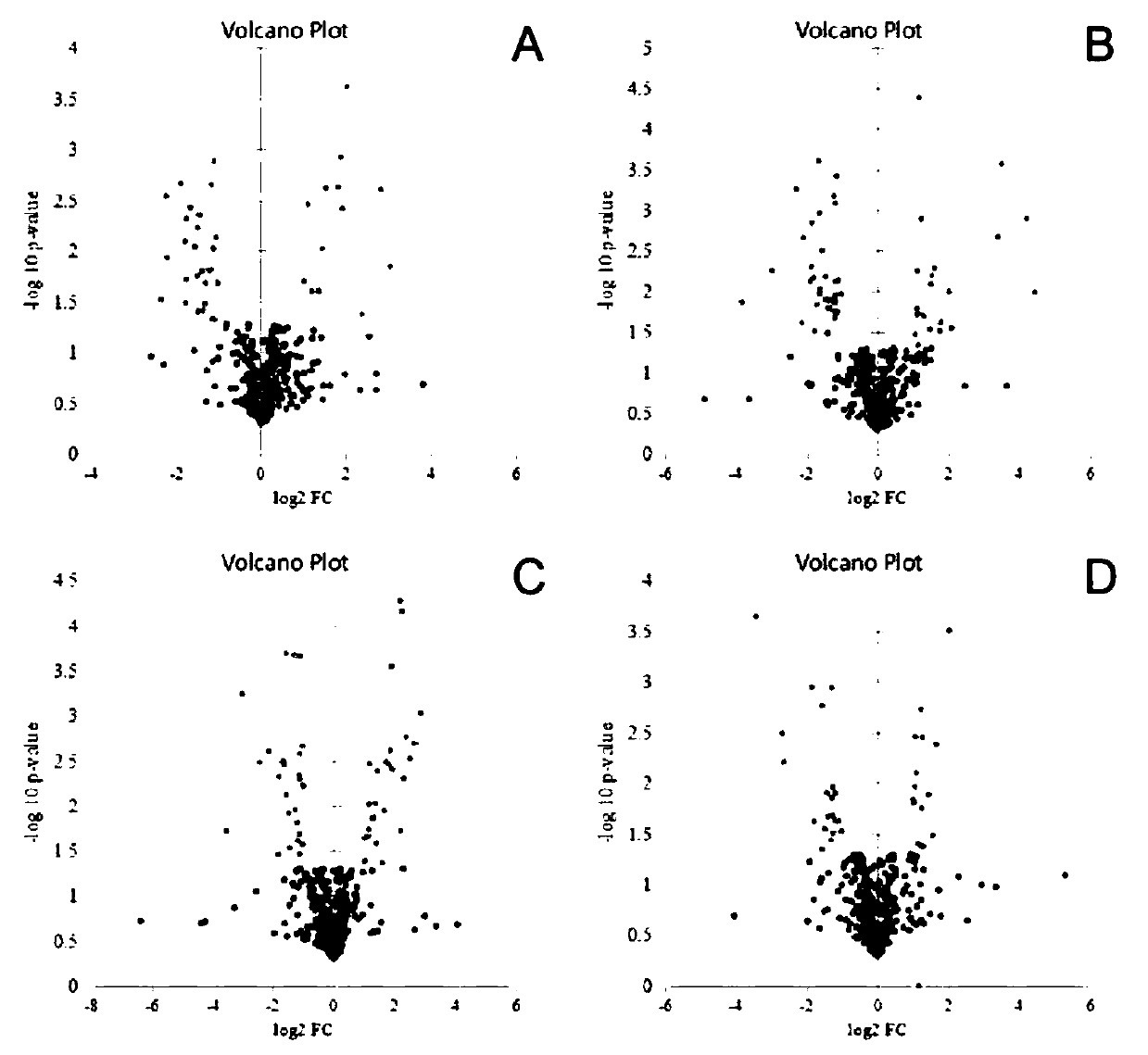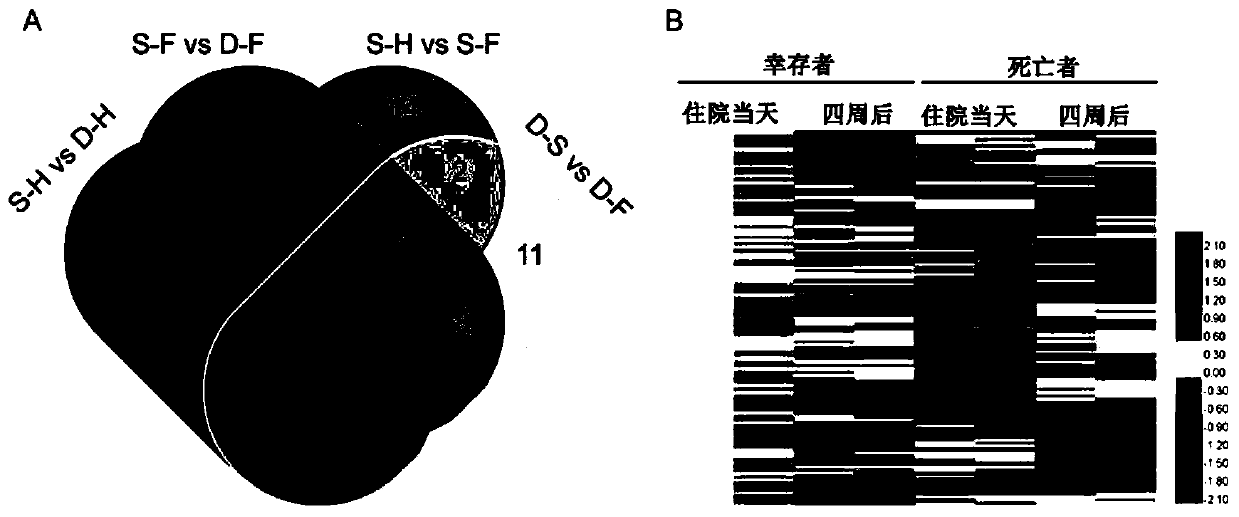Application of marker for predicting prognosis of acute liver failure to preparation of kit for predicting prognosis evaluation of acute liver failure
A technology for acute liver failure and prognosis assessment, applied in the field of biomedicine, can solve problems such as no proteomic data linking
- Summary
- Abstract
- Description
- Claims
- Application Information
AI Technical Summary
Problems solved by technology
Method used
Image
Examples
Embodiment 1
[0061] This example provides the application of markers for predicting the prognosis of acute liver failure in the preparation of a kit for predicting the prognosis of acute liver failure, the markers for predicting the prognosis of acute liver failure include complement factor B and plasma protease C1 inhibitor , coagulation factor XII and apolipoprotein C-1.
[0062] The kit can detect the expression levels of complement factor B, plasma protease C1 inhibitor, blood coagulation factor XII and apolipoprotein C-1 in the serum of HBV-ACLF patients, so that the prognosis of acute liver failure can be predicted.
Embodiment 2
[0064] This embodiment verifies the technical solution of embodiment 1 through experiments.
[0065] 1. Experimental design and clinical characteristics of patients with HBV-ACLF
[0066] Screened according to the inclusion and exclusion criteria, 24 patients participated in this study, including 11 survivors (group S) and 13 deaths (group D). The clinical characteristics of these patients are shown in Table 1.
[0067] Table 1 Clinical information of patients with HBV-associated ACLF
[0068]
[0069]
[0070] *, p-value < 0.05; **, p-value < 0.01. Leukocytes, whole blood cells; Plt, platelets; ALT, glutamate-pyruvate aminotransferase; TBil, total billrubin; CHE, cholinesterase; albumin; Cr, creatinine; PT, prothrombin time; PTA, prothrombin Activity; INR, International Normalized Coagulation Time Ratio; FIB, Fibrinogen; Child, Child-Turcotte-Pugh; MELD, Model of End-Stage Liver Disease.
[0071] It can be seen from Table 1 that, except prothrombin time (PTs, p=0.02...
PUM
 Login to View More
Login to View More Abstract
Description
Claims
Application Information
 Login to View More
Login to View More - R&D
- Intellectual Property
- Life Sciences
- Materials
- Tech Scout
- Unparalleled Data Quality
- Higher Quality Content
- 60% Fewer Hallucinations
Browse by: Latest US Patents, China's latest patents, Technical Efficacy Thesaurus, Application Domain, Technology Topic, Popular Technical Reports.
© 2025 PatSnap. All rights reserved.Legal|Privacy policy|Modern Slavery Act Transparency Statement|Sitemap|About US| Contact US: help@patsnap.com



